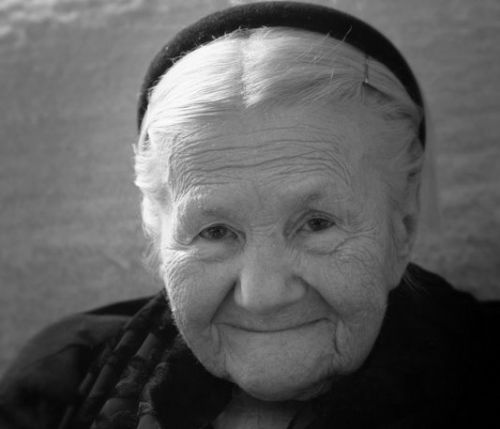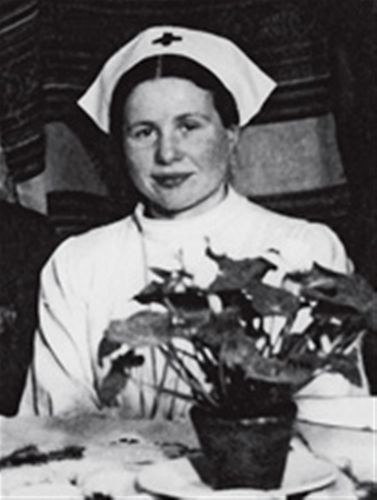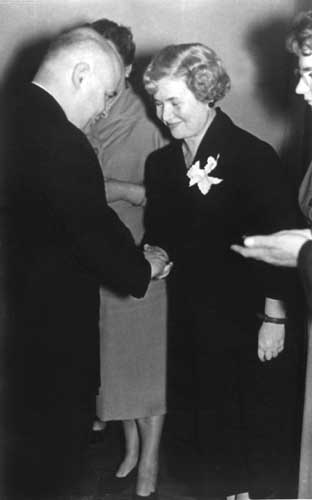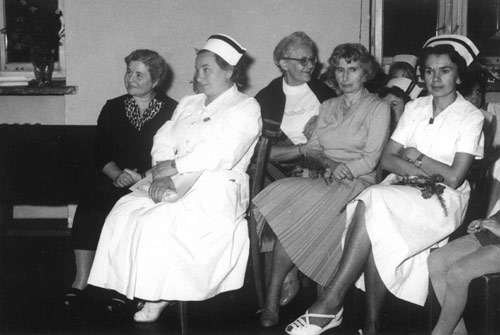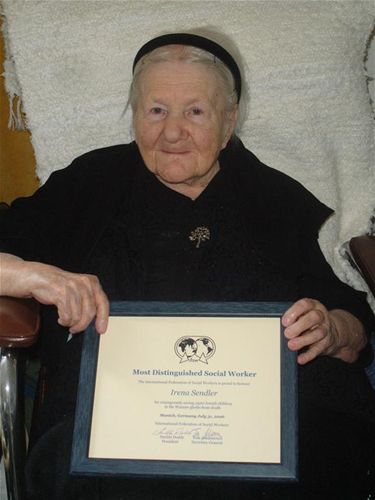Facts about Irena
The facts above are all taken from Irena, child survivors, or other primary sources...
Facts about Irena which are not generally known. All of these are from primary sources.
Irena Sendler was born as Irena Krzyżanowska on 15 February 1910 in Warsaw to Dr. Stanisław Krzyżanowski, a physician, and his wife, Janina. Her father died in February 1917 from typhus contracted while treating patients whom his colleagues refused to treat in fear of contracting the disease, among them many Jews. After his death, Jewish community leaders offered her mother help in paying for Sendler’s education. Sendler studied Polish literature at Warsaw University. She opposed the ghetto-bench system that existed at some prewar Polish universities and defaced her grade card. As a result of her public protest she was suspended from the University of Warsaw for three years.
Irena was born in Warsaw in 1910, but she grew up in the town of Otwock, Poland.
Irena’s nameday is October 20, while her birthday is February 15.
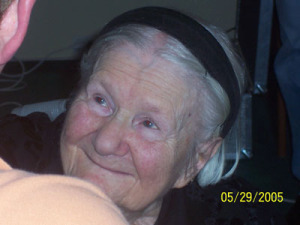
Irena’s great grandfather led a rebellion against the Czars.
Browse our photo gallery for a photo and information on Irena’s mother and father.
Irena was an only child, but she had a son and a daughter. Her daughter, Janka,still lives in Warsaw, Poland, and her son Adam passed away in 1999 (interestingly enough, the day the Life in a Jar project started on September 23rd). Adam’s daughter, Irena’s granddaughter Agniesa, is the same age as the girls who started the Life in a Jar project.
As early as 1939, when the Germans invaded Warsaw, Irena began helping Jews by offering them food and shelter.
When the Warsaw Ghetto was erected in 1940, Irena could no longer help isolated Jews. The Ghetto was an area the size of New York’s Central Park and 450,000 Jewish people were forced into this area.
Once the Warsaw Ghetto was formed, she started by saving the orphan children.
Irena used her papers as a Polish social worker and papers from one of the workers of the Contagious Disease Department (who was a member of the underground Zegota) to enter the Warsaw Ghetto.
Irena and her helpers made over 3,000 false documents to help Jewish families before she joined Zegota and the children’s division.
Irena was in charge of the Children’s Division of Zegota (a Polish underground group to assist Jewish people).
From Anna Krzyzewska, who is the daughter of Mrs. Maria Kukulska (Anna’s mother helped care for Irena’s children after they left the Ghetto, before they were placed) : Irena Sendlerowa was not only very active in saving Jewish children but also in resistance against the Germans. “She was frequently at our apartment.”
Irena used the old courthouse on the edge of the Warsaw Ghetto (still standing) as one of the main routes of smuggling children out.
Irena Sendlerowa was a Polish woman who, along with her underground network, rescued 2,500 Jewish children in Poland during World War II. Many of this number were already outside of the Ghetto and in hiding.
Irena and the ten who went with her into the ghetto, used many, many methods to smuggle children out. There were five main means of escape: 1 – using an ambulance a child could be taken out hidden under the stretcher. 2 – escape through the courthouse. 3 – a child could be taken out using the sewer pipes or other secret underground passages. 4 – A trolley could carry out children hiding in a sack, in a trunk, a suitcase or something similar. 5 – if a child could pretend to be sick or was actually very ill, it could be legally removed using the ambulance. ****Irena did use a dog on occasion, but very few times out of the many rescues. Also, the number of babies saved was small in relation to the total number of children rescued.
There was a church next to the ghetto, but the entrance leading to it was “sealed” by the Germans. If a child could speak good Polish and rattle off some Christian prayers it could be smuggled in through the “sealed” entrance and later taken to the Aryan side. This was very dangerous since Germans often used a rouse to trick the Poles and then arrest.
Irena and her network made sure that each family hiding a child realized the child must be returned to Jewish relatives after the war.
Irena (code name Jolanta) was arrested on October 20, 1943. When arrested she felt almost liberated. She was placed in the notorious Piawiak prison, where she was constantly questioned and tortured. During the questioning she had her legs and feet fractured.
The German who interrogated her was young, very stylish and spoke perfect Polish. He wanted the names of the Zegota leaders, their addresses and the names of others involved. Irena fed him the version that she and her collaborators had prepared in the event they were captured. The German held up a folder with information of places, times and persons who had informed on her. She received a death sentence. She was to be shot. Unbeknown to her, Zegota had bribed the German executioner who helped her escape. On the following day the Germans loudly proclaimed her execution. Posters were put up all over the city with the news that she was shot. Irena read the posters herself.
During the remaining years of the war, she lived hidden, just like the children she rescued. Irena was the only one who knew where the children were to be found. When the war was finally over, she dug up the bottles and began the job of finding the children and trying to find a living parent.
Almost all the parents of the children Irena saved, died at the Treblinka death camp.
“The names of the saved children I wrote down on thin tissue paper.”
‘Life in a Jar’ started as a National History Day project in September of 1999. Four students (Megan Stewart, Liz Cambers, Sabrina Coons and Jessica Shelton) began looking for information about Irena Sendler. Mr. Conard had given them a clipping he had found in a 1994 issue of U.S. News and World Report. The mention of Irena was in a story called “Other Schindlers.” Only 1 web site on the Internet mentioned Irena, it was not until the students visited Poland in 2001 that Irena’s story became known to the world. At last count there were over 750,000 web sites on the Internet mentioning Irena.
When Irena first heard about the project in Kansas, “I was stunned and fascinated; very, very suprised; interested.” In one of Irena’s first letters to the girls, she wrote, “My emotion is being shadowed by the fact that no one from the circle of my faithful coworkers, who constantly risked their lives, could live long enough to enjoy all the honors that now are falling upon me…. I can’t find the words to thank you, my dear girls…. Before the day you have written the play “Life in a Jar” — nobody in my own country and in the whole world cared about my person and my work during the war …”
The students of the ‘Life in a Jar’ project have gathered over 4,000 pages of primary material and research on the life of Irena Sendler and work of Zegota.
Irena’s story became known to the world through the Life in a Jar project. The author of the Polish book which features Irena’s life story says, “Everybody I talked to in working on this book, said that international and Polish interest in Irena Sendler’s activities was begun and provoked by the activities of the Kansas girls and popularization in the American media.”
Irena Sendler was announced as the 2003 winner of the Jan Karski award for Valor and Courage. The announcement was made on July 24, 2003 and the awards ceremony was on October 23, 2003 in Washington, D.C.
Be careful about Internet facts concerning Irena. snopes.com has much incorrect information. The Life in a Jar cast has gathered over 4,000 pages and thousands of hours of primary research and interviews.
